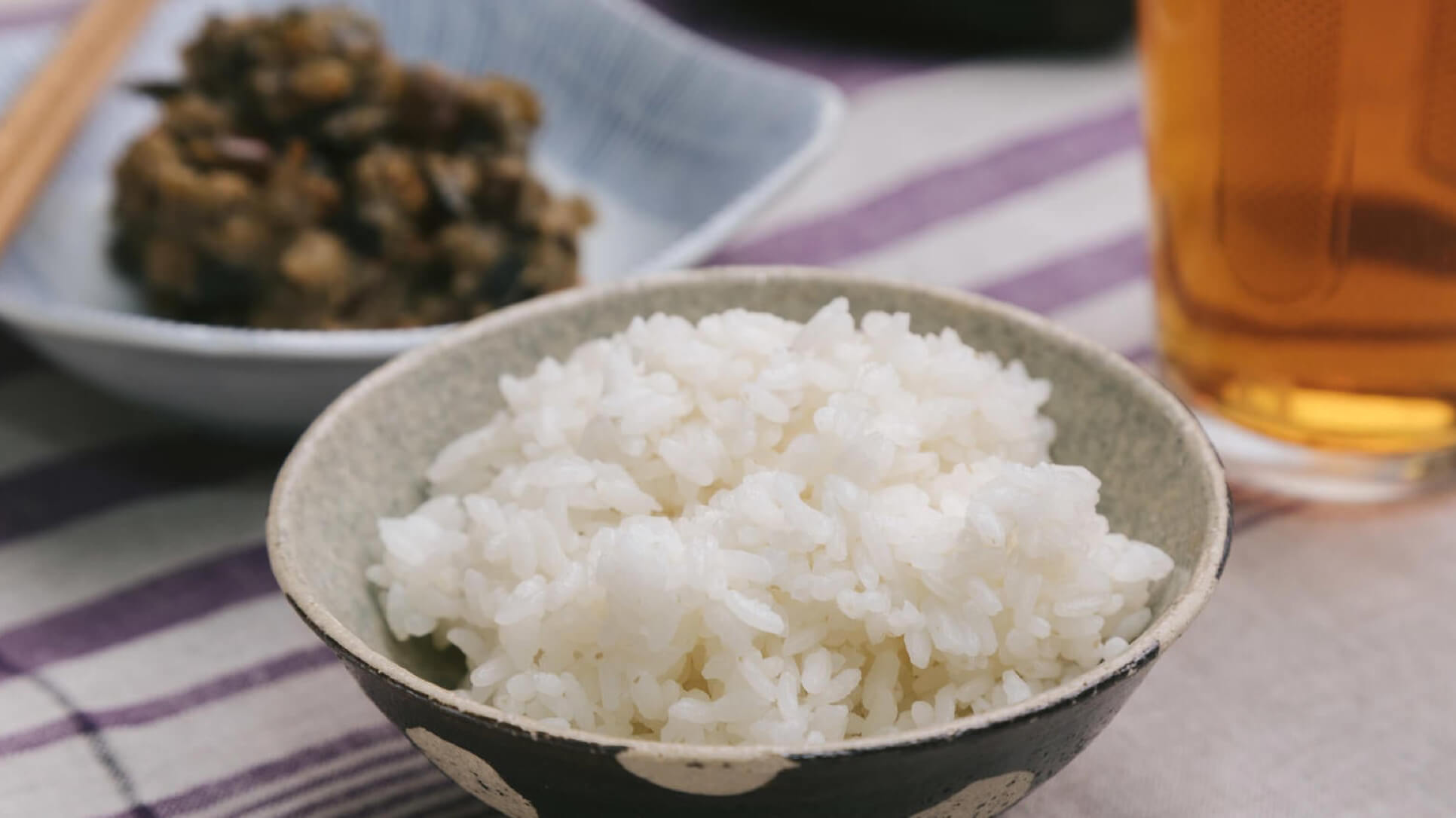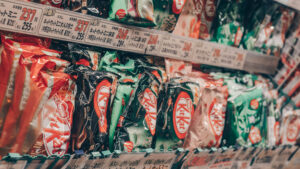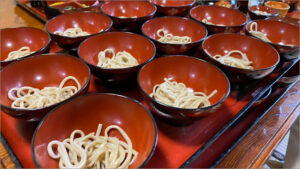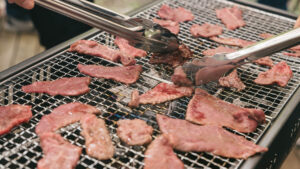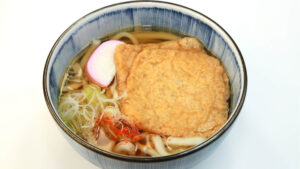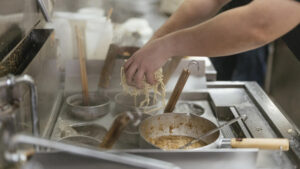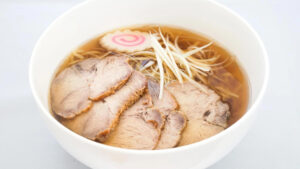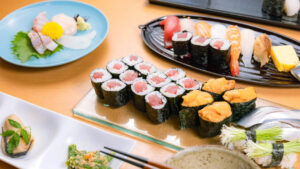The traditional Japanese meal style called Ichiju Sansai has gained worldwide attention as a representative example of a healthy and well-balanced menu. Ichiju Sansai refers to a Japanese set meal style that combines one soup, three side dishes, and a staple of rice. It emphasizes the use of seasonal ingredients throughout the four seasons, focusing on nutritional balance, aesthetic appeal, and the joy of eating. This article clearly explains the basics and history of Ichiju Sansai, how to create an ideal menu, and tips for easily incorporating it even overseas. If you are interested in Japanese cuisine, please use this as a helpful reference.
Contents
- 1 What Is Ichiju Sansai? Understanding Japan’s Food Culture
- 2 Putting Ichiju Sansai into Practice! How to Create an Ideal Menu
- 3 Ichiju Sansai and the Four Seasons of Japan
- 4 Health Benefits and Advantages of Ichiju Sansai
- 5 Tips for Easily Incorporating Ichiju Sansai Overseas
- 6 Experiencing Japanese Food Culture and Healthy Eating Through Ichiju Sansai
What Is Ichiju Sansai? Understanding Japan’s Food Culture
The Basics and Historical Background of Ichiju Sansai
The Meaning and Origin of the Term “Ichiju Sansai”
“Ichiju Sansai” is a term that represents a traditional Japanese meal style. “Ichiju” means one soup (such as miso soup or clear broth), and “Sansai” refers to three side dishes. Specifically, it consists of one main dish, two side dishes, and a staple of rice.
The origin of Ichiju Sansai is said to date back to the dining tables of nobles during the Heian period (794–1185). It was originally developed as court cuisine and meals for monks, then gradually spread to the common people over time. By the Edo period (1603–1868), it became widely adopted in ordinary households and is now known as the ideal form of the Japanese dining table.
The Relationship Between Japanese Eating Habits and Ichiju Sansai
Since ancient times, Japanese people have placed great importance on incorporating seasonal ingredients in a balanced way. Ichiju Sansai embodies this concept by providing energy through rice as the staple, protein from the main dish, and vitamins, minerals, and dietary fiber from the side dishes and soup. This nutritionally balanced menu has supported the health of the Japanese people.
Moreover, Ichiju Sansai focuses not only on nutrition but also on harmony of flavors and colorful presentation. Attention to the choice of dishes and plating that reflects the seasons shows the Japanese aesthetic sense and culture, allowing people to experience Japan’s unique sensibility through the dining table.
Differences From Other Countries’ Meal Styles
Ichiju Sansai differs significantly from meal styles in other countries by centering around rice and enjoying a variety of small portions of different side dishes in balance. In Western countries, main dishes of meat or fish are usually served in large portions on one plate, with relatively simple side dishes. In contrast, Japanese meals feature many small, diverse dishes that offer delicate combinations of flavors.
Additionally, while many countries serve meals in courses one after another, Ichiju Sansai presents rice, soup, and side dishes all at once. This allows for flexible combinations and the freedom to enjoy changing flavors at one’s own pace—one of the unique charms of Japanese cuisine.
Elements That Make Up Ichiju Sansai
“Shiru” (Soup) — The Role of the Soup
Soup is an indispensable part of the Japanese dining table and a key element of Ichiju Sansai. Typical examples include miso soup and clear broth soups, but many variations can be enjoyed using seasonal ingredients. Soups help warm the body and aid digestion, and they also provide an easy way to intake minerals and dietary fiber, which are often lacking in diets. Additionally, soup plays an important role in balancing the overall flavors of the meal and adding moisture to the dining experience.
“Sai” (Side Dishes) — The Basics of Three Side Dishes
“Sai” refers to side dishes, and in Ichiju Sansai, this consists of one main dish and two side dishes. The main dish usually centers on protein-rich foods such as meat, fish, eggs, or soy products. Side dishes often use vegetables, seaweed, and mushrooms, prepared with different cooking methods like simmering, seasoning, or steaming to create a variety of flavors, textures, and colors. Combining several small portions of dishes naturally balances nutrition and creates a meal that is enjoyable without becoming monotonous.
“Kome” (Rice) — The Centerpiece of the Japanese Table
At the heart of Japanese cuisine is “kome” (rice). Japanese rice is short-grain and known for its plump, sticky texture. The simple, understated flavor of the rice pairs perfectly with side dishes and soup, enhancing the overall taste. As a rich source of carbohydrates, rice serves as the primary energy source and has long been cherished as the fundamental staple supporting the health of the Japanese people. In an Ichiju Sansai meal, rice literally holds the important position as the “pillar” of the meal.
The Food Philosophy Valued by Ichiju Sansai
Nutritional Balance in Meals
One of the great appeals of Ichiju Sansai is that it naturally ensures a balanced intake of nutrients. The staple rice supplies carbohydrates as a source of energy, the main dish provides protein, and the side dishes and soup include vegetables, seaweed, and mushrooms to supplement vitamins, minerals, and dietary fiber. By combining a variety of ingredients in this way, it is possible to consume a broad range of nutrients without bias toward any particular one. A nutritionally balanced diet like this is effective for maintaining health and preventing illness, forming the foundation of the longevity and healthy lifestyle of the Japanese people.
Enjoying Seasonality and the Flavors of the Season
In Japanese food culture, actively incorporating seasonal (“shun”) ingredients is very important. “Shun” refers to the time when vegetables, seafood, and other foods are at their most delicious and nutritious. Ichiju Sansai meals emphasize this seasonality by including bamboo shoots and wild greens in spring, tomatoes and cucumbers in summer, Pacific saury and mushrooms in autumn, and root vegetables and napa cabbage in winter. Eating seasonal ingredients like this allows people to savor nature’s bounty and feel the changes of the seasons — a culturally significant practice.
A Sustainable Mindset That Avoids Waste
Ichiju Sansai embodies the spirit of “mottainai,” which means not wasting food. For example, fish is used not only for its flesh but also its bones and skin; vegetables are cooked using peels and leaves rather than discarded. Additionally, leftover dishes are often transformed into new meals the next day, minimizing food waste. This mindset aligns with modern sustainable eating habits and offers valuable lessons for reducing the global issue of food loss. Ichiju Sansai is not merely a meal format but also carries a philosophical aspect that expresses gratitude and respect for nature and the environment.
Putting Ichiju Sansai into Practice! How to Create an Ideal Menu
Choosing Your Soup (Shiru)
Classic Miso Soup with Tofu and Wakame
Miso soup is a staple of Japanese home cooking and a versatile soup that provides easy nutrition. Among the classic varieties, miso soup with tofu and wakame seaweed is especially popular. Tofu supplies high-quality protein, while wakame adds minerals and dietary fiber. Miso, a fermented food, helps improve gut health and boosts immunity. Its simple yet comforting flavor makes it a perfect match for almost any meal.
Refreshing Clear Broth Soup (Osuimono)
Osuimono is a clear, delicate soup based on a transparent dashi broth with simple ingredients added. Its mild seasoning allows you to enjoy the natural flavors and aromas of the ingredients. Common additions include tofu, mitsuba herbs, yuba (tofu skin), and slices of fish, which enhance the taste without overpowering the dish. Low in fat and calories, it is recommended when you want to appreciate the subtlety of Japanese cuisine or create a slightly elegant atmosphere.
Hearty Kenchin-jiru with Plenty of Seasonal Vegetables
Kenchin-jiru is a thick, vegetable-packed soup centered around root vegetables and seasonal produce. Carrots, daikon radish, burdock root, taro, konnyaku, and mushrooms are commonly used, making it an excellent way to address vegetable shortages. Nutrient-rich and filling, this soup alone can be very satisfying. It warms the body effectively, making it especially suitable during the cold seasons.
Main Dish (Shusai) Ideas
Grilled Fish (Salmon, Mackerel, etc.)
Grilled fish is one of the most traditional and popular main dishes in Ichiju Sansai. Salmon and mackerel, in particular, are familiar to Japanese people, and their fatty flesh develops rich flavors when grilled. Common cooking methods include simple salt-grilling or teriyaki with soy sauce. These fish provide abundant protein and healthy fats such as DHA and EPA, contributing to a well-balanced diet. Serving with lemon or grated daikon radish adds a refreshing touch.
Nimono (Simmered Dishes) like Nikujaga and Chikuzen-ni
Nimono, or simmered dishes, are essential home-cooked main dishes in Japan. The representative “Nikujaga” is made by simmering beef or pork with potatoes, onions, carrots, and other vegetables in a sweet-savory sauce, offering a nostalgic, homely flavor. “Chikuzen-ni” involves slow-cooking chicken and root vegetables in a soy sauce-based broth, maximizing the natural umami of the ingredients. Both dishes are hearty, nutritionally balanced, and easy to prepare in advance, making them perfect for busy days.
Ginger Pork or Chicken
Ginger pork or chicken is a popular main dish with a savory-sweet flavor that stimulates the appetite. The meat is marinated in a sauce made of soy sauce, sake, sugar, and ginger, then simply pan-fried, making it quick and easy to prepare. Ginger warms the body and promotes digestion, making this dish especially recommended during seasons when appetite tends to decline. Serving with shredded cabbage and tomatoes creates a nutritionally balanced and visually appealing main dish.
Adding Side Dishes (Fukusai)
Spinach with Sesame Dressing (Goma-ae)
Spinach goma-ae is a nutritious and easy-to-make classic Japanese side dish. Boiled spinach is simply dressed with ground sesame seeds, sugar, and soy sauce. The fragrant aroma of sesame and its subtle sweetness enhance the natural flavor of the vegetables. Spinach is rich in iron and vitamins, making this dish a great way to improve the nutritional balance of your meal.
Chawanmushi — Savory Steamed Egg Custard with Dashi
Chawanmushi is a delicate steamed dish made by mixing eggs with dashi broth to create a smooth and silky texture. Common ingredients include shrimp, chicken, shiitake mushrooms, and kamaboko (fish cake), though variations exist depending on the region and household. The gentle umami of the infused broth spreads softly in the mouth, adding an elegant touch that elevates the entire meal.
Lightly Pickled Seasonal Vegetables (Asazuke)
Asazuke, made from lightly pickled seasonal vegetables, is a refreshing side dish characterized by its crisp texture and clean taste. Cucumbers, daikon radish, carrots, and eggplants are typically marinated briefly in salt or vinegar, allowing you to enjoy the freshness and seasonality of the vegetables. It serves as a perfect palate cleanser alongside richer dishes and also aids digestion. Quick and simple to prepare, it’s an easy dish to incorporate into daily meals.
Ichiju Sansai and the Four Seasons of Japan
Spring and Summer Menu Examples
Bamboo Shoot Rice Set to Taste Spring
In spring, bamboo shoots—known as “takenoko”—appear as a seasonal ingredient in Japan. Bamboo shoot rice is made by simmering bamboo shoots in a lightly seasoned broth with soy sauce, then cooking it together with rice. The dish is characterized by a crisp texture and refreshing aroma. This pairs well with soups such as miso soup with nanohana (rapeseed blossoms) or spring cabbage. Side dishes like boiled nanohana or a fresh onion salad add vibrant colors and a feeling of spring to the table.
Cold Soup Set Meal to Prevent Summer Fatigue
Ideal for hot summer days when appetite tends to decrease, “hiyajiru” originated in Miyazaki Prefecture. It is a chilled soup made by mixing miso, ground sesame seeds, and broth, combined with cucumber, shiso leaves, tofu, and other ingredients, then poured over rice. This refreshing dish replenishes nutrition effectively. Adding light side dishes such as marinated tomatoes or lightly pickled myoga ginger and shiso leaves completes a healthy menu perfect for preventing summer fatigue.
Refreshing Cold Simmered Summer Vegetables Set
During hot seasons, chilled simmered summer vegetables are recommended. Vegetables such as eggplant, pumpkin, tomato, and okra are simmered in lightly seasoned broth and then chilled in the refrigerator. This cool simmered dish is easy to eat even when appetite is low in summer and provides rich nutrition. Pair it with a cold clear soup of tofu and wakame seaweed, and side dishes like cucumber and wakame vinegar salad or edamame to create a well-balanced meal for a refreshing summer.
Autumn and Winter Menu Examples
Autumn Set Meal Featuring Pacific Saury and Mushrooms
Autumn is the season when Pacific saury (sanma) and mushrooms are at their peak. Grilled salted sanma is rich in fat and has a fragrant aroma, making it a representative autumn delicacy. Pairing it with simmered or dressed side dishes using mushrooms like shimeji and maitake creates a menu full of seasonal flavors. Clear soups or miso soups with mushrooms complement this meal perfectly, bringing a sense of autumn’s deepening presence to the dining table.
Warming Winter Pork Soup (Tonjiru) Set Meal
During the cold winter months, tonjiru—a hearty pork and root vegetable soup—is very popular. This rich miso-based soup contains root vegetables such as daikon radish, burdock root, carrots, and taro, providing high nutrition and warming the body from within. For the main dish, grilled fish or teriyaki chicken can be served, while side dishes like lightly pickled napa cabbage and spinach ohitashi balance the meal, helping to get through the cold season.
Chikuzen-ni Set Meal with Plenty of Root Vegetables
Chikuzen-ni is a traditional home-cooked dish where chicken, burdock root, lotus root, carrots, and other root vegetables are simmered sweetly and savory in soy sauce and mirin. The crunchy texture of the root vegetables and rich flavor absorption make it a beloved winter staple. Serving it with a mild miso soup featuring napa cabbage and green onions, alongside side dishes like simmered dried daikon and spinach with sesame dressing, creates a nutritious and satisfying winter menu.
Japanese Seasonal Events and Ichiju Sansai
New Year’s Celebration Meal
New Year’s is one of the most important seasonal events in Japan, and special celebratory meals are prepared within the Ichiju Sansai style. The focus is on “osechi ryori,” a variety of dishes packed in stacked boxes called jubako, but the basic Ichiju Sansai structure is also respected. For example, celebratory dishes such as black soybeans (kuromame), herring roe (kazunoko), and red-and-white pickled vegetables (kohaku namasu) are served to wish for health and happiness in the new year. The soup is typically a hearty ozoni, with variations in seasoning and ingredients depending on the region.
Obon’s Shojin Ryori (Buddhist Vegetarian Cuisine)
Obon is an important event for welcoming and honoring ancestral spirits. During this period, “shojin ryori,” a Buddhist vegetarian cuisine, is offered in the form of Ichiju Sansai. Colorful dishes centered on vegetables, tofu, and seaweed are prepared, symbolizing purification of both body and mind. Shojin ryori highlights the natural flavors of ingredients and uses minimal oil and seasoning, resulting in a simple yet beautiful meal that reflects gratitude for nature’s blessings.
Special Menus for Setsubun and Hinamatsuri
During traditional events like Setsubun and Hinamatsuri, special dishes reflecting the season and occasion are added to the Ichiju Sansai menu. At Setsubun, roasted soybeans for bean-throwing and rolled sushi (makizushi) are prepared, and eating “ehomaki” rolls has become a popular custom. For Hinamatsuri (Girls’ Day), colorful chirashi sushi and clam clear soup are typical, symbolizing prayers for the healthy growth of girls. These festive meals express seasonal awareness and celebratory feelings within the Ichiju Sansai framework, representing a unique aspect of Japanese culture.
Health Benefits and Advantages of Ichiju Sansai
Healthy Eating with Balanced Meals
Prevents Nutritional Imbalances
Ichiju Sansai combines a variety of ingredients in small portions to prevent nutritional imbalances. The staple rice provides energy through carbohydrates, the main dish supplies quality protein and fats, and the side dishes and soup offer vitamins, minerals, and dietary fiber in a well-balanced manner. This meal style is ideal for maintaining health, helping to avoid both excessive intake and deficiencies of specific nutrients, thereby supporting proper bodily functions.
Low-Calorie Yet Satisfying Meals
Although Ichiju Sansai features multiple dishes that may seem voluminous, each portion is modest, making it easier to control total calorie intake. The abundant use of vegetables and seaweed provides plenty of dietary fiber, which promotes a feeling of fullness. For these reasons, Ichiju Sansai is a suitable meal plan for those aiming for weight management or overall health maintenance.
Boosts Immunity and Prevents Lifestyle Diseases
As a foundation of Japanese cuisine, Ichiju Sansai emphasizes fermented foods such as miso and pickles, as well as a rich intake of vegetables and seafood—all known to enhance immune function. By keeping salt and fat intake moderate while ensuring nutritional balance, this meal style helps prevent lifestyle-related diseases like hypertension, diabetes, and heart disease. Recognized as one of the secrets behind Japan’s longevity, Ichiju Sansai is gaining global attention for its health-promoting qualities.
Improving Efficiency in Meal Preparation
Making Meal Planning Easier
Since the basic structure of Ichiju Sansai is well-defined, it reduces the guesswork involved in daily meal planning. Simply focusing on the combination of one soup, one main dish, and two side dishes ensures a balanced meal, significantly saving time and effort in creating menus. This also helps streamline grocery shopping lists and reduces food waste.
Cooking Every Day Without Overwhelm
With reasonable portion sizes and variety, Ichiju Sansai lightens the burden of cooking, making it easier to maintain daily meal preparation routines. Preparing multiple small dishes helps prevent monotony and nutritional imbalance, allowing the whole family to enjoy satisfying meals with ease. Additionally, Japanese cooking techniques tend to be relatively simple, making this style accessible even for beginners.
Reducing Burden with Time-Saving Cooking Methods
Ichiju Sansai allows for time-saving strategies through ingredient selection and cooking methods. For example, making dashi broth in bulk and refrigerating it, or chopping and freezing vegetables in advance, can shorten cooking time. Choosing simmered or steamed main dishes lets you cook one item while preparing others simultaneously. These practices enable busy individuals to prepare healthy Japanese meals easily, significantly reducing daily cooking stress.
Tips for Easily Incorporating Ichiju Sansai Overseas
Using Familiar Ingredients to Make Japanese Food
Substitutes Available at Local Supermarkets
In some overseas locations, Japanese ingredients may be hard to find, but by cleverly substituting with items available at local supermarkets, you can enjoy Ichiju Sansai with ease. For example, fermented foods like tempeh or natto can replace miso; dashi broth can be substituted with kombu tea or the soaking liquid from dried shiitake mushrooms instead of kombu or bonito flakes. Spinach or kale can stand in for wakame seaweed, and salmon fillets can be used instead of Japanese salmon varieties. Using similar ingredients allows for smooth adaptation.
Simple Seasoning Adaptations
If you lack typical Japanese seasonings, you can adjust flavors by combining common ingredients: salt or shio-koji can replace soy sauce or miso; honey, sugar, or lemon juice can substitute for mirin or vinegar. For example, mixing salt with a small amount of Worcestershire sauce or fish sauce can recreate a Japanese-style umami flavor in place of soy sauce. Such seasoning tweaks make it easier to replicate authentic Japanese tastes without difficulty.
Easy Japanese Recipes for Foreigners
Simple Ichiju Sansai recipes easy for overseas cooks include nikujaga (meat and potato stew), basic miso soup, and chilled tofu topped with chopped green onions and soy sauce as a side dish. These dishes have straightforward steps and can be prepared quickly, making them accessible even for beginners. Including photos or videos with recipes further enhances understanding and encourages trying these dishes in everyday meals.
Choosing Cooking Tools and Tableware
Gathering Basic Cooking Tools
To prepare Ichiju Sansai, having a minimal set of cooking tools is helpful. For example, a pot for making dashi broth, a medium-sized pot for miso soup and simmered dishes, and a frying pan for grilling fish or meat are basically sufficient. Additionally, a knife and cutting board are essential for chopping ingredients, and having cooking chopsticks and a ladle makes the process smoother. These simple tools are generally easy to find even overseas, so beginners can start cooking with confidence.
Enjoying Tableware and Food Presentation
Japanese food culture places great importance on tableware and presentation, which greatly enhance the enjoyment of a meal. Using small plates and bowls to separate side dishes creates a colorful display, and selecting dishes that reflect the seasons adds a special touch. For example, cherry blossom patterned dishes in spring or autumn leaf designs in fall help express seasonal feelings through tableware. Paying attention to color balance, height, and arrangement makes the presentation more attractive and stimulates appetite.
Using Chopsticks and Chopstick Rests
Chopsticks are indispensable in Japanese cuisine. Learning the correct way to hold and use chopsticks allows for a more elegant dining experience. Using chopstick rests keeps the table neat and prevents chopsticks from directly touching the surface, which is more hygienic. Chopstick rests often feature seasonal motifs or traditional designs, adding color and charm to the table. Chopstick sets and rests are relatively easy to purchase overseas, so incorporating them can help create an authentic Japanese dining atmosphere.
Experiencing Japanese Food Culture and Healthy Eating Through Ichiju Sansai
Ichiju Sansai is a symbol of Japanese food culture that is simple yet deeply meaningful. It excels in nutritional balance and incorporates thoughtful ways to enjoy seasonal ingredients without waste. Understanding how to build an ideal menu can make daily meal preparation more efficient and contribute to maintaining good health. Since it can also be easily recreated overseas using familiar ingredients and seasonings, we encourage you to incorporate the principles of Ichiju Sansai into your lifestyle. Through beautiful presentation, thoughtful tableware selection, and leisurely meal times, you can enjoy a rich and fulfilling Japanese dining experience.
